
We started session three off with some explorations of vocal techniques that can be used to disrupt our natural ways of speaking – a handy tool for our toolbox indeed. We played around with changes in speed, unusual emphasis, and my personal favorite, the unconcealed breath. Then we worked on creating some soundscapes together. We started with throwing imaginary pebbles into an imaginary pond from our mouths. This group seems naturally good at listening to each other and building layers of sound together, so the pebbles game was a smashing success the first time around. We moved on to realms more intricate with a bit of a rhythm jam. This game is just about creating sound together using bodies and voices, so no movement through space is necessary, we were able to do this one standing in a circle. Then we did some more trusty shaping exercises. This time we worked in groups of three and plus a chair to change things up a bit. It’s amazing to me how different the addition of the chair makes this game. Having to incorporate that static shape into the constantly changing shapes is a whole new interesting thing to explore. Where would we be without our trusty yellow chairs?
Megan started the readings off by teaching us a little bit about the Open Theater. We read some of Susan Yankowitz’s script for a 1996 update of a show they originally created for performance in 1969. The revised script is called 1969 Terminal 1996. Working in the 60s,The Open Theater folks felt that current society had stripped us of a sense of community and thought that theatrical events might be a place where community could be created. This philosophy was reflected in the way they created their theater pieces as well, with all the performers contributing ideas and bringing in research and personal accounts to be incorporated into the show. And experts in the issues being explored coming in to teach the group. They created collages of scenes and images focused on a theme, in this case issues surrounding death and dying. The result is an event that seems like some sort of ritual in which the dying call up the dead to help them understand death and both groups relate their experiences through dialogue, song, images, and movement.

This style is particularly interesting because it is one of the few styles we study which incorporates the performers’ personal experiences. Open Theater pieces are usually created from movement work and image building first and the words to go with the ideas created come after, likewise a lot of personal and individual work is done and then fit together to blend into a whole.
Our second reading was of two short works by Adrienne Kennedy. Kennedy’s plays deal with issues of identity crisis in the face of oppressive forces and traumatic events. Her characters cannot reconcile the contradictory natures of their identities and experiences and therefore exist in nightmarish landscapes of confused histories.  Kennedy’s heady images include half human half rat bodies, living nativity statues, women’s bodies with dog heads, bloody dresses, and giant chalkboards being peered down upon by roman soldiers. Easy on the psyche it is not, but her surreal use of imagery and language is highly evocative and unbelievably compelling. How can we ever hope to understand what is going on if the characters in the play can’t even understand what is going on? Kennedy also began writing in the 60’s and, as is appropriate for someone so conflicted in her identities, her work didn’t seem to fit in to any existing artistic community of the time.
Kennedy’s heady images include half human half rat bodies, living nativity statues, women’s bodies with dog heads, bloody dresses, and giant chalkboards being peered down upon by roman soldiers. Easy on the psyche it is not, but her surreal use of imagery and language is highly evocative and unbelievably compelling. How can we ever hope to understand what is going on if the characters in the play can’t even understand what is going on? Kennedy also began writing in the 60’s and, as is appropriate for someone so conflicted in her identities, her work didn’t seem to fit in to any existing artistic community of the time.

But some things cannot be ignored. Kennedy’s work still defies all attempts to fix it within a recognizable category of theatrical work. I have read these plays countless times and every time the experience is different. Nothing could more perfectly convey the terrifying uncertainties of a constantly shifting identity.
After the readings we continued our vocal explorations. One of my favorites is to imagine a sphere about the size of a grapefruit floating a couple of feet from your mouth then imagine wrapping your words around that hanging sphere as you speak. The results are just enough different from normal speech to make you take notice that something is not right, but it is such a subtle difference that you’re not sure what it is that is wrong. Perfect for Kennedy day! Then Jim got everyone speaking like chainsaws. It was a riot as 24 chainsaws sawed their way through the line “Let the dead come through and let it begin with me,” which we borrowed from the Open Theater piece we had read. Then it was time to try our hand at another of our true stock in trade exercises: Image Theater. This is a variation on one of Augusto Boal’s exercises. One of the most interesting aspects of this exercise is that all of the work must be done in silence, so all negotiations of what is going to happen as the groups create their images must happen without the benefit of spoken communication. It is always interesting to see how different people solve this problem. Turns out there are tons of ways to communicate without speaking. And that goes for communicating with an audience as well, right? Yeah! Let’s try some of that for sure!
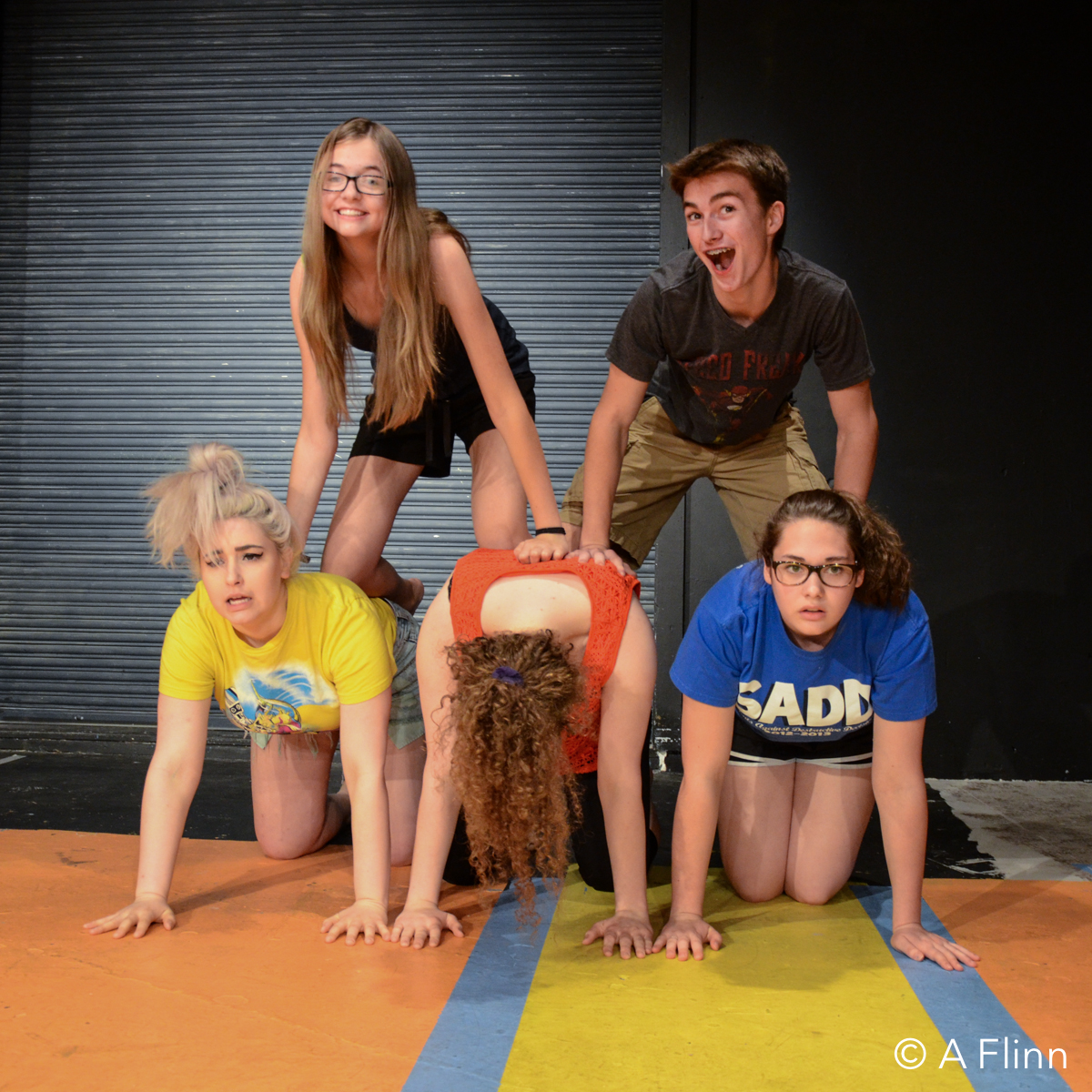
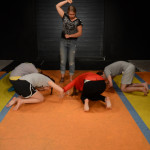
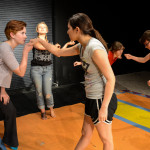
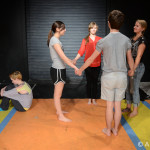
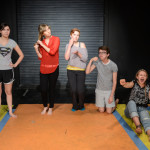
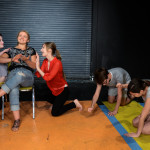
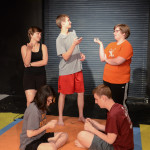
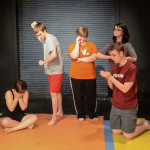
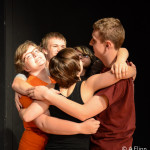
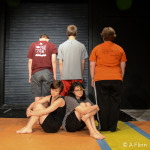
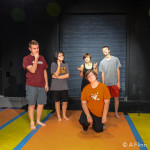
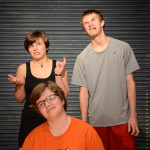
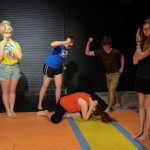
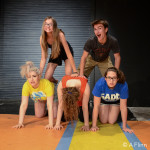
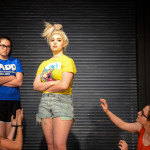
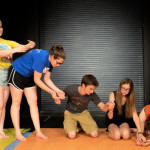
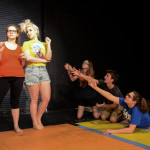
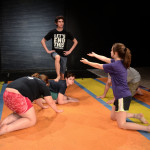
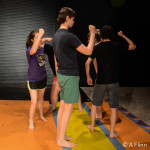
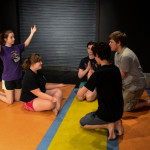
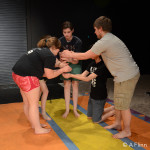
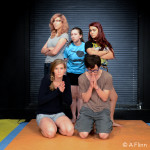
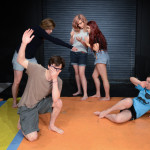
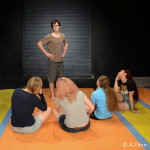
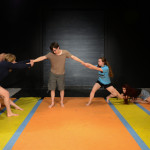
Leave a Reply
You must be logged in to post a comment.